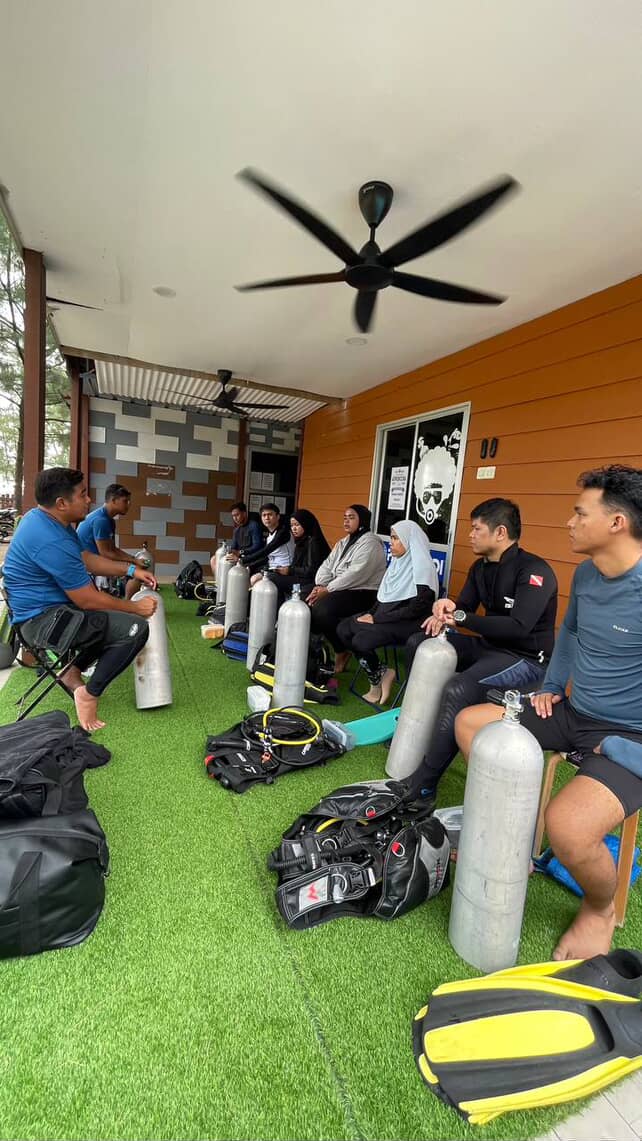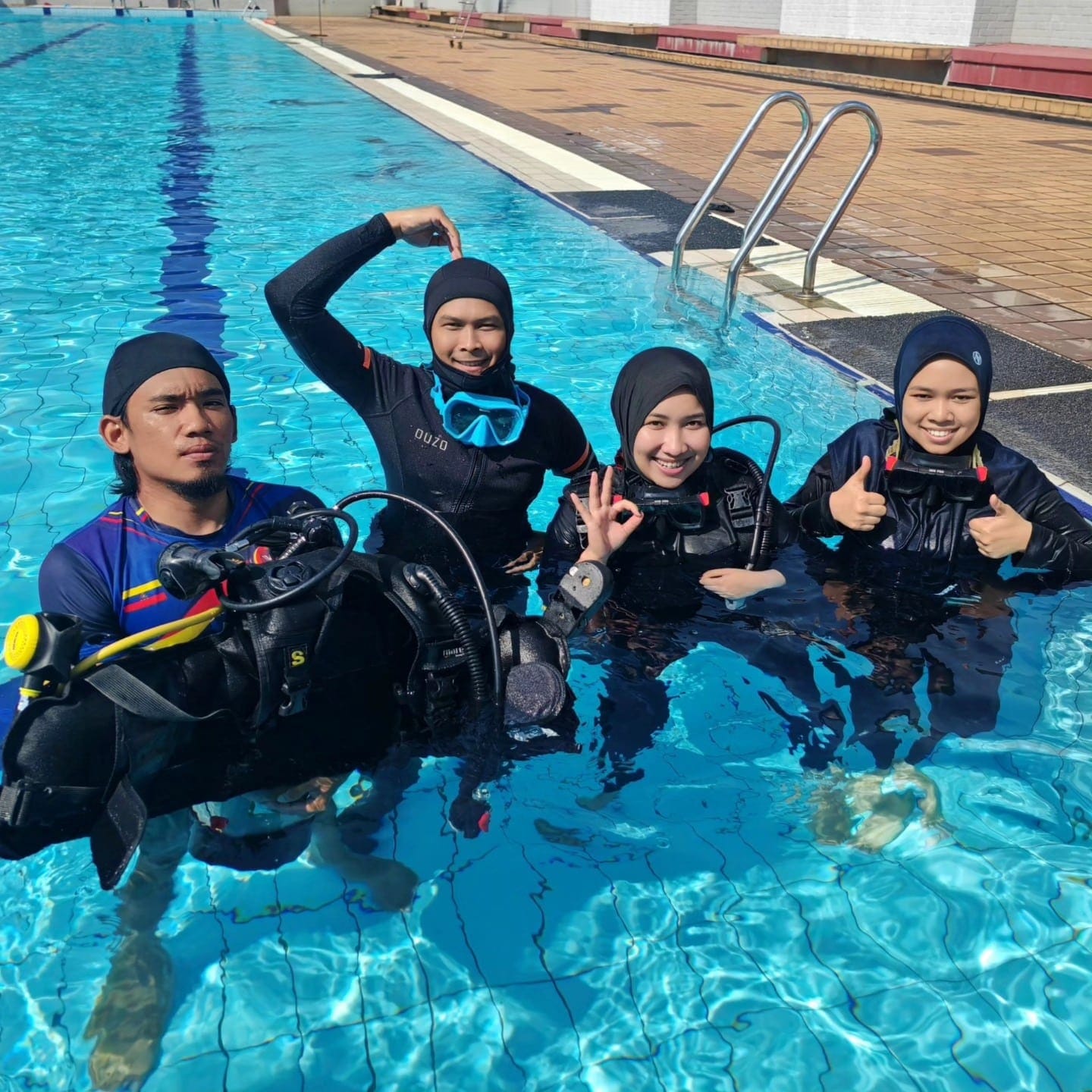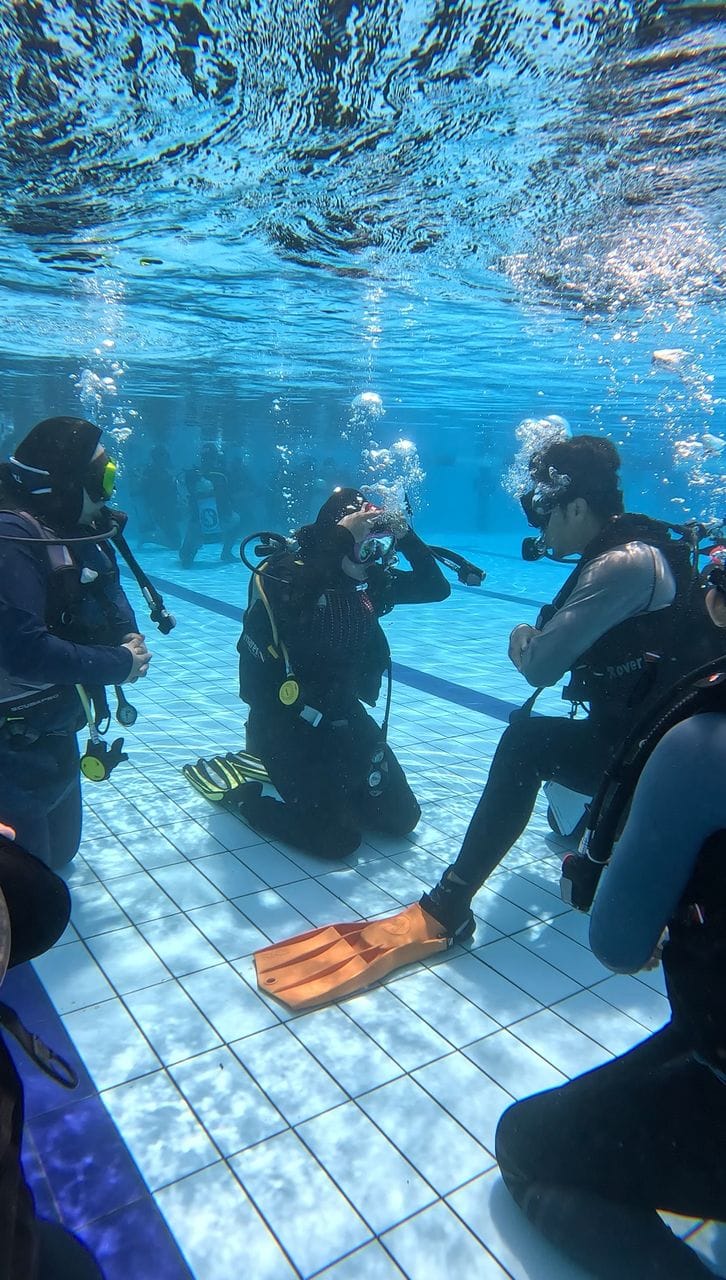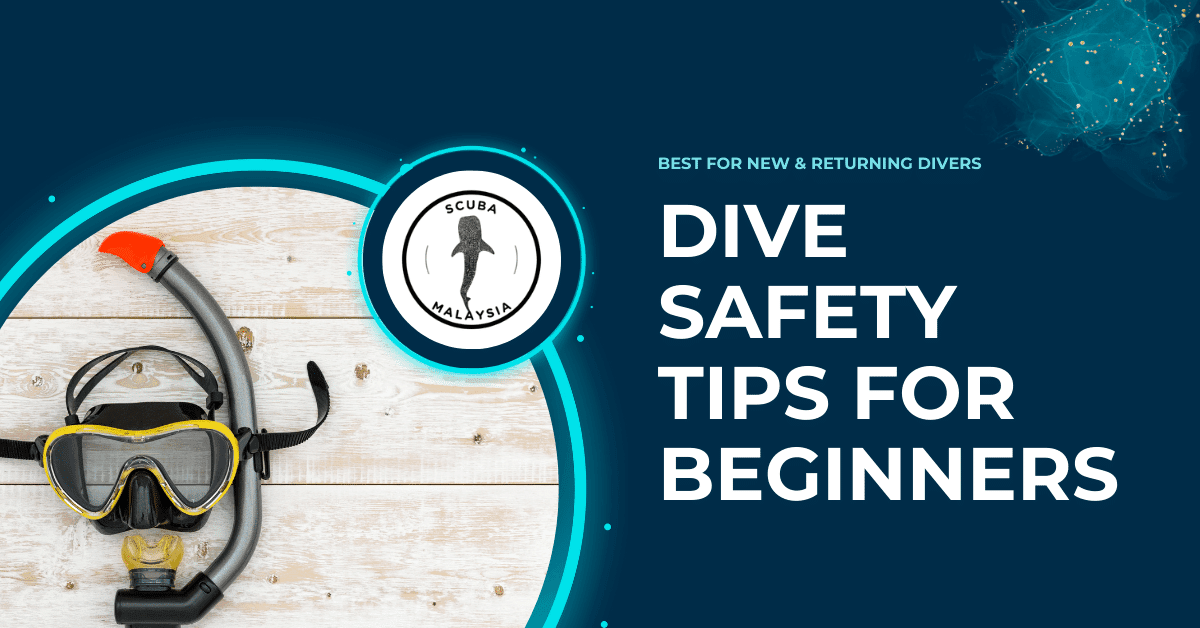Dive Safety • Beginners
Safe diving isn’t about luck – it’s about habits. This guide brings together practical dive safety tips for beginners so you can plan better, breathe calmer and surface with a smile every time. We’ll cover core safety practices, when to book a refresher, how to read stress signals, rescue awareness, and Malaysia-specific advice for building confidence dive after dive.
New & returning divers
BWRAF • Buoyancy • Safety stop
Refresher • Diver Stress & Rescue
Scuba Malaysia – Directory
1) Safety Mindset & Preparation
Every safe dive starts on land. The most underrated dive safety tips for beginners are simple: sleep well, hydrate, eat light and know your limits. Fatigue and dehydration quietly increase anxiety, cramping and air consumption. A calm diver makes better decisions.
Pre-dive checklist that actually helps
- Hydration & fuel: Drink water through the day; avoid heavy meals and alcohol before diving.
- Self-check: No cold, fever or ear issues. If you’re not 100%, skip the dive – there’s always another day.
- Conditions: Ask about current, visibility, entry/exit, boat traffic and emergency plan.
- Plan the plan: Agree on depth, time, turn pressure, lost-buddy procedure and signals with your buddy.
The habit of deliberate preparation is the backbone of all dive safety tips for beginners. It lowers mental load underwater and frees your attention for buoyancy, navigation and marine life.

- Credit image: Instructor Faqhtee @ Afroscuba
2) Basic Dive Safety Tips for Beginners
Think of these as your “no-compromise” rules. Repeat them until they’re automatic – the hallmark of good dive safety tips for beginners.
Buddy system
Never dive alone. Stay within visual range. Check in every minute or so: depth, time, gas, and direction. Use the same set of hand signals.
BWRAF pre-dive check
BCD, Weights, Releases, Air, Final OK. Inflate/deflate the BCD, confirm weight pockets, open cylinder valve fully, breathe from both the primary and octo, then do a final OK.
Breathing & buoyancy
Breathe continuously. Add and release tiny bursts of air to the BCD. Practise neutral hovering for 30–60 seconds in 5–6 meters water every dive – it’s free training.
Controlled ascents
Ascend no faster than 18 meters/min; finish with a 3–5 minute safety stop at 5 meters. Vent air early. Watch your computer – not your neighbour.
Situational awareness
Keep a mental scan going: buddy position, depth, time, gas, current direction, exit route. This one habit prevents most problems long before they start.
3) Refresher: When You Need It
Skills fade quickly when you’re out of the water. A practical rule in dive safety tips for beginners: if you haven’t dived in 6–12 months, book a refresher. It’s a small investment that brings big returns in confidence and gas efficiency.
What a good refresher includes
- Equipment setup, buddy checks and entry/exit routines.
- Mask clearing, regulator recovery and controlled descents.
- Neutral hovering, trim and finning efficiency.
- Ascent control and a consistent safety stop.
- Basic emergency skills: air-sharing, tired diver tow, SMB deployment.
In Malaysia’s beginner-friendly hubs (Perhentian, Redang, Tioman), most centers offer half-day or one-day refreshers in a pool or protected bay before guided open-water dives. It’s one of the smartest dive safety tips for beginners you can act on immediately.

- Credit image: Masktank Scuba
4) Common Beginner Mistakes (and Fixes)
Learning from others keeps you ahead. These pitfalls show up again and again – so build your dive safety tips for beginners around avoiding them.
Overweighting
Too much lead creates hard descents, head-down trim and fin fatigue. Do a surface weight check (simulate a near-empty tank) until you float neutrally with a gentle inhale.
Rapid ascents
Rushing up is a classic error. Vent early, ascend slowly, and keep eyes on your computer. Use a reference if available (reef, line, slope).
“Yo-yo” buoyancy
If you keep rising and dropping, pause in 5–6 meters to practise hovering. Make smaller BCD adjustments and slow your breathing rhythm.
Gas blindness
Forgetting to check SPG is a habit issue. Set turn-pressure, check often, and reserve extra for exit and contingencies.
Task loading with cameras
Cameras multiply cognitive load. Nail buoyancy first. Start with a small setup and keep actions deliberate and slow.
5) Diver Stress & Rescue Awareness
Stress sneaks in through small openings – leaking mask, changing current, low visibility, separation anxiety. The most practical dive safety tips for beginners focus on recognising and interrupting that spiral early.
Use the C.A.L.M. loop
- Cease: stop finning, stabilise, grab a non-living reference if needed (line/rock, not live coral).
- Alert: signal your buddy clearly – what’s wrong, what you need.
- Lower breathing: slow, steady inhales and longer exhales – watch your bubbles, not your worries.
- Manage: fix one thing at a time (clear mask, re-establish buoyancy, then re-orient).
Why Rescue training matters
Even if you’re not going pro, a Diver Stress & Rescue course is a confidence multiplier. You’ll learn self-rescue, assisting a tired or panicked diver, towing, and surface management. The mindset alone reinforces all your dive safety tips for beginners.
6) Gear Fit & Maintenance
Well-fitting, well-maintained equipment turns potential stress into non-events – one reason gear is central to dive safety tips for beginners.
- Mask fit: Test seal without the strap. Use anti-fog before entry. Practise calm, methodical mask clears.
- BCD & inflator: Ensure smooth inflation/deflation and working dump valves. Know every dump point by feel.
- Regulator: Listen for odd sounds or free-flow; service on schedule with reputable centers.
- Exposure protection: A snug wetsuit keeps you warm and reduces air consumption; shivering increases stress.
- SMB + spool: Learn to deploy at 5 m safely; it’s your high-visibility signal to boats and guides.
Bring your own mask if you can – it’s the most personal piece of kit. For frequent divers, adding a computer and SMB early is one of the smartest dive safety tips for beginners.

- Credit image: Sixnature Scuba
7) Malaysia-Specific Safety Advice
Malaysia is a superb classroom for applying dive safety tips for beginners– with varied but forgiving conditions.
- East Coast (Perhentian, Redang, Tioman, Tenggol): March–October. Calmer seas and good visibility – ideal for courses, refreshers and buoyancy practice. Many sites are 5–18 m with sandy entries.
- Sabah (Mabul, Kapalai, TARP; advanced: Sipadan, Layang-Layang): Year-round. Start in protected macro sites (Mabul, Kapalai, TARP). Leave current-exposed walls and blue-water drifts for later.
Climb the ladder gradually: shallow house reefs → gentle drift dives → moderate current. That progression applies your dive safety tips for beginners without overloading you.
8) Gas Planning, NDL & Ascent Protocol
Good planning shrinks surprises. Build these pragmatic rules into your personal dive safety tips for beginners:
Rule of thirds (recreational version)
One-third out, one-third back, one-third reserve – or simply turn the dive at half a tank and keep extra for ascent and surface contingencies.
No-decompression limits
Use your computer. Avoid “riding the line”. Start ascent early, complete a full safety stop and don’t bounce up and down the reef.
Ascent discipline
Vent early and often, ascend under control, and hold a relaxed, neutral safety stop. If surfacing away from the boat, deploy an SMB for visibility.
Navigation & separation
If separated, search for 1 minute with a slow 360° scan, then ascend slowly to reunite at the surface. Don’t burn gas chasing shadows.
9) Reef Etiquette & Environmental Safety
Safe diving includes safe reefs. “Zero contact” is one of the most important dive safety tips for beginners – for your sake and for the corals.
- Perfect trim and buoyancy before approaching subjects; avoid fin wash over sand and coral.
- Zoom with your camera – don’t crowd marine life. Your lungs are your first stabiliser.
- Follow the briefing: no touching, no collecting, no feeding. Respect no-go zones and boat lanes.
- Carry a small trash bag in your pocket—lifting a floating wrapper is micro-rescue for the reef.
Good etiquette reduces incidents, keeps you calm and preserves the very environment you came to enjoy.

- credit image:
Haven’t dived in a while? Book a refresher before your trip. Ready to grow? Consider Diver Stress & Rescue. Strong dive safety tips for beginners today create confident, relaxed dives tomorrow.
FAQs
Do I really need a refresher if I haven’t dived for a year?
Yes. A refresher is one of the most effective dive safety tips for beginners. It restores muscle memory for buoyancy, mask skills and ascent control—cutting stress and saving gas.
Is Malaysia safe for first ocean dives?
Absolutely. Perhentian, Tioman and Redang offer protected bays, sandy entries and experienced instructors – perfect for building confidence.
What course adds the most safety after Open Water?
Diver Stress & Rescue. You’ll learn self-rescue and how to help others—skills that reinforce every part of your dive safety tips for beginners toolkit.
Do I need my own gear?
Not at first. Start with a personal mask for comfort and fit. As you dive more, add a dive computer and SMB – both are high-impact safety upgrades.
You May Also Like
Beginner’s Guide: Start Scuba Diving in Malaysia
Learn how to take your first steps underwater—from try-dives to your first ocean certification.

